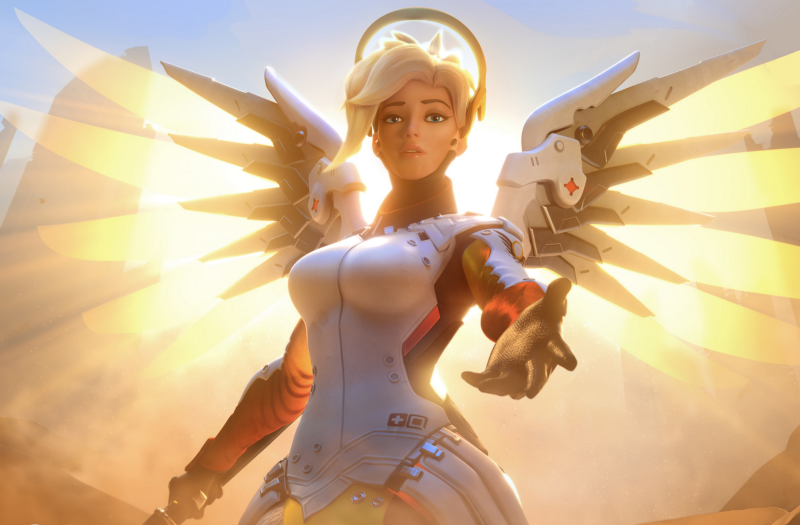
The following is a simple guide to watching and understanding Overwatch. It is intended to help viewers with little to no experience with the game to watch and understand what is going on beyond the mere action on their screens. If there’s something that is unclear clear by the end of the guide, feel welcome to ask me questions on twitter at @RadoNonfire.
TL;DR
Overwatch is a First-Person Shooter game, but it mixes the genre with the idea of heroes from DotA-style games (for ex. DOTA2, LoL, HotS). It gets rid of loadouts, buying or picking-up weapons from the ground in favor of unlimited ammunition and predetermined set of abilities. However, unlike in mobas, there isn’t leveling-up and you start with all, except one (the ultimate) of the abilities available. Additional difference is that a player can change their hero when dead, or within a spawning area.
The game is played by two teams, each of six players, and on all but one type of maps (Control) the squads are assigned a specific role, of being either attackers or defenders. Similarly to Counter-Strike teams take turns at each of the roles, but unlike the military FPS there are multiple types of maps/game modes, played in Overwatch tournaments. Another key difference between the two games is that in Overwatch you can only win through ‘working’ the objective, as a secondary win condition doesn’t exist.
Noteworthy Game Mechanics
Below you can read briefly about some of the major game mechanics that are important to gaining a basic understanding of the game’s flow.
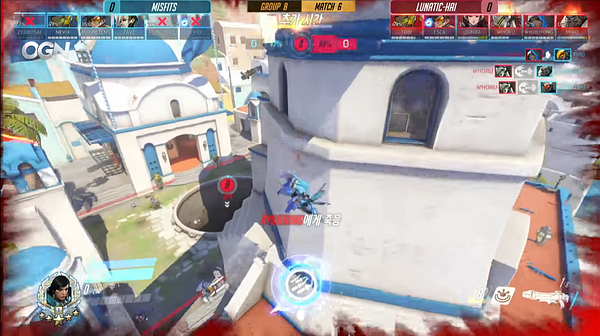
Ultimates
An ultimate ability, similar to DotA-style games, is the most powerful one a hero has at their disposal. Unlike in those however, in Overwatch a player get to use them by charging-up said ability. Charging occurs by landing damage, healing and overall using your character’s kit, as well as slowly gaining it over time. Upon switching a character the player loses fully the already accumulated ultimate charge.
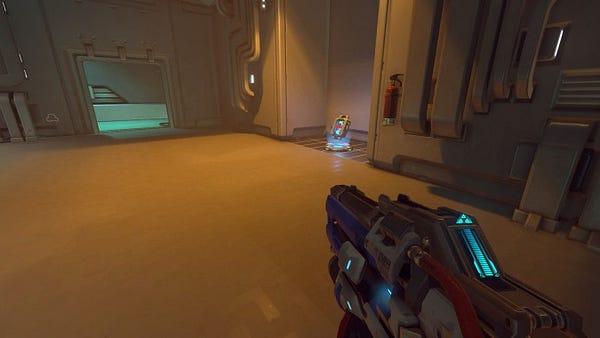
Health Packs
In Overwatch players might not have to pick-up weapons and ammo, as in Quake, but they can grab instant health points, to undo damage, from specific spawning points. There are two kind of HP pick-ups: small medkits that restore 75HP and respawn after 10 seconds and Large health packs which restore 250 HP, respawning 15 seconds after being picked-up.
Note: The character Sombra has an ability that can make any health pack respawn four times quicker than normally and unattainable by the opponents .

Overtime
OT is an extension of the normal game time. It takes place when one of the defending squad is on the edge of winning, but the attackers have players keeping the objective active. If overtime is activated, but an attacker is no longer present at the objective a timer starts running down at the end of which overtime ends. Should an attacker activate the objective before the time runs out the timer gets reset. However, if the game is in OT for more than 20 seconds, the time required for OT to end, due to no attacker being present, starts decreasing. Additionally respawn times are increased by two seconds during Overtime.
Time Bank
Time bank can occur, on all modes except Control, when the score is tied after both squads have taken their turn of being attackers or defenders. If at least one of the teams had time left upon finishing their offensive run a second rotation of attacking and defending will start, under rules based on the specific type of map. I’ll refrain from going into more details, as the guide is meant to be a short one, but you can find additional information about Time Bank formats at this link [click].
Map Types
The types of maps in Overwatch are distinguished by the type objective/s you can find on them.
Control, also known as King of the Hill (KotH) or single Capture Point (CP). On this type of maps the two teams battle to secure an area on the map that’s placed at equidistant position from both teams’ spawns. Both squads start at the score of 0 and maintaining control over the specific zone builds it up from 0 to 100. The contender that hits the 100 first takes a section win.
Any KotH map is composed of three different sections, but tournament play has seen Control maps played as both, Bo5 (Best of five), with two sections being played twice if the bout goes the full distance, and the seemingly intended by Blizzard Bo3.
The area is secured, by one team’s players being present within it, when the opponent isnt and once the CP is claimed by a squad their score only stops increasing if the opposition can take over. As going from 0 to 100 takes only two minutes KotH maps can be extremely snowbally and the outcome of a section is heavily dependent on the first fight. A top team can maintain the ultimate advantage from it and the time is rarely enough for the team on their back foot to be able to have all six ultimates available for one fight in which they would be guaranteed to be at least even.
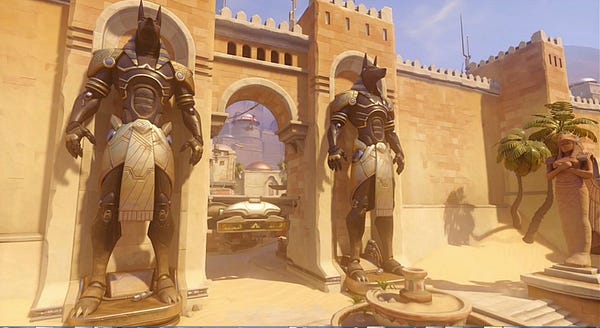
Assault maps are also sometimes referred to as double CP maps. That is the case because there are two objecives present on this type of map and both are Capture Points. However, unlike KotH, the team take turns on the role of defenders and attackers and the mechanics of capturing a point work differently.
The CP takes considerably less time to secure (varying from 32 to 15 seconds depending on the number of players present on it) and if even a single defender is inside the marked area the build-up for the offense stops.
The spawn for the defenders is the same throughout the whole game, close to point B, whereas the attackers start spawning near A once it is secured. This naturally makes B considerably harder to secure, as even though the offensive side gets a spawn that’s located closer to it than their initial one, the defenders’ is virtually right next it. This can lead to the defending team using stalling tactics of sending in hard to kill characters, one at a time, to delay the attackers until more defenders respawn.
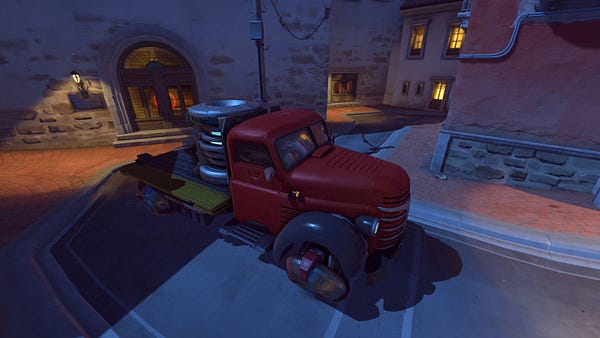
Escort, otherwise known as Payload, maps are Blizzard’s version of the widely popular TF2 mode. One team pushes a vehicle (which can often get called ‘cart’ even though it varies, depending on the map) on its set pathway, by being in its immediate vicinity, while the other tries to prevent its progression through the level.
Similarly to Assault maps, as soon as an enemy is in the area of the objective the build-up, or in this case its movement, stops. Additionally if no one from the offensive squad is present the cart is retreats slowly, until it reaches the spawning point or a checkpoint, of which there are two before the final delivery point. There are two checkpoints which, in addition to preventing the cart from being pushed back, provide new spawning areas for the attackers, located closer to the cart’s final destination.
Hybrid maps combine Assault and Escort into one mode. The first “checkpoint” works as Assault’s CPs, but after the attackers secure it they start pushing a cart through the second checkpoint to the third and final one.
The Heroes:
Currently Overwatch has 23 heroes, divided by Blizzard between four types by their intended roles: Support, Tank, Defense, Offensive. However in professional play, both experts and fans unite Defense and Offense under the DPS heroes tag.
Support heroes are the ones that provide primarily healing and utility, rather than damage. As of the writing of this article exists only one support hero that does not provide healing, Symmetra.
Tanks’ main purposes are to zone out enemies, minimize the damage their teammates receive and pester the opposition’s backline. Within the tanks class exists the off-tank subclass. It refers to heroes branded tanks who can still take more hits than the average DPS or support, but are also able dish out quite a bit of damage themselves.
DPS heroes, or simply [damage] dealers as they are known in Korea, are the ones who traditionally do the carrying, as they have the highest capacity for damage per second if they’re left alone. However, as they lack both, durability and ability to self-sustain consistently, assistance is often required for them to be able to do the job. And of course this is where the other two classes come in
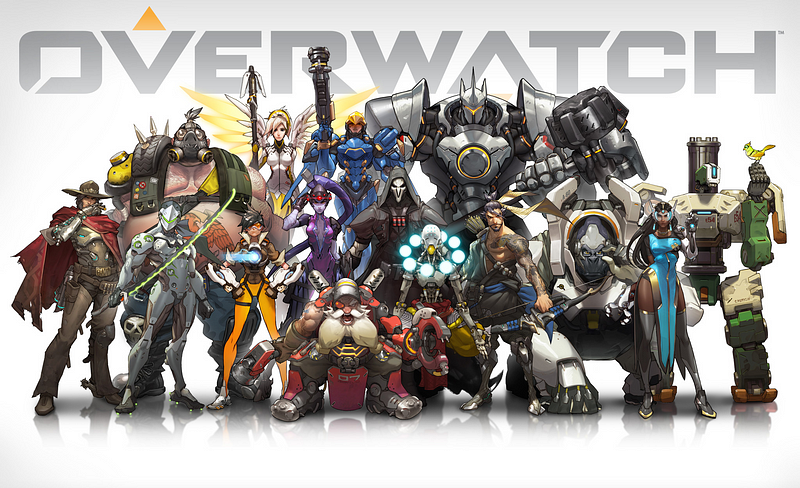
Compositions and Other Terms
A key aspect of the game is the teams’ combination of heroes and how they interact with each other and with the enemy. One of the most important ways of analyzing a composition is determining its purpose. Different six hero set-ups will excel at different aspects of the game, one will be good at diving the enemy’s backline, another will be superior at continuously poking and wear out the front line and third will be good at staying on the objective and fighting in a straight-up 6v6 brawl and etc.
Generally the viewer doesn’t need to concern themselves with it too much, as the casters mention them a lot it will be a good way for new viewers to know what to expect when an engagement occurs or measure whether a team is playing in the optimal way for their set-up.
A different way to categorize a composition is by the number of supports, tanks and DPS heroes in it. The ‘standard’ set-ups will vary based on patch and current metagame, however even top teams will have favor certain compositions, based on personnel or simple preference. That can, to a degree, define a team’s style of play and tracking the number of heroes in a role a team tends to play is something even the most casual of viewers can do.
Team’s playstyle, or team color as referred to by Koreans, is the way a team favors or is able to play the game. Naturally most teams have different styles, based on personnel, shotcalling and map preferences, however for the purposes of analysis talent, experts and fans alike try take note of the important trends and qualities of teams. A good current example of a team that has an extremely defined style is Lunatic-Hai. They like playing aggressive dive composition, based on the strengths of their tank and support players.
Metagame is the ever-changing interaction between styles of play. The current meta often refers to the ways of playing the game deemed as the best at the time. In games it tends to change based on the overall field, the most popular styles and their counters. However in a game like Overwatch the metagame is an addition, heavily influenced by the regularity of patches which can buff or nerf specific abilities, heroes and compositions.
Watch a Match
As always, the best way to put your newfound knowledge to the test is to watch a match!
Ghost Gaming v Team Immortals – Winter Premier Grand Final (January 2017)
If you have questions after finishing reading this or watching a match, feel free to direct them at the author on twitter at @RadoNonfire.

